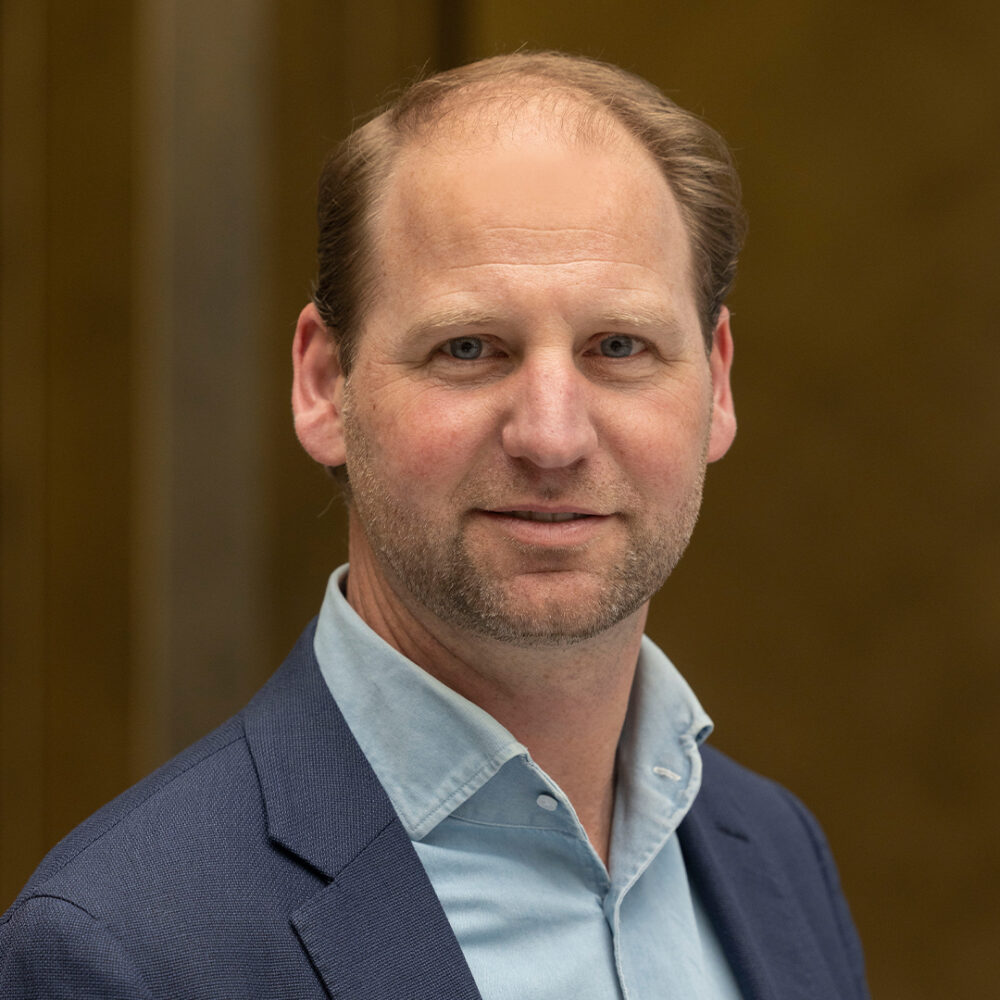

Looking ahead to the Aramis FEED phase
After nearly two years, the preparation phase for Aramis is almost complete. Once the preferred options for the pipeline route and landing location have been determined, the project can enter the FEED (Front-End Engineering Design) phase. Bram Herfkens, asset manager at EBN and project lead for Aramis, explains: “It’s an extensive process with a lead time of about 18 months. The term FEED actually doesn’t fully cover it: the phase includes both technical and non-technical components, which are equally important.”
Bram is a pioneer in the field of carbon capture and storage (CCS). He worked for natural gas producer TAQA on the first offshore CCS project in the Netherlands more than 10 years ago. The gas fields – now being used for the Porthos CCS project – had been earmarked, but the project was eventually halted. Between these two CCS projects, Bram worked in the oil and gas industry in Iraq and Abu Dhabi as a project manager. Because EBN is a shareholder in Aramis and Porthos, he is now involved in managing both projects.

Bram Herfkens - Asset manager at EBN and project lead for Aramis
Total annual capacity of 22 megatonnes of CO2
Aramis will soon be capable of transporting up to 22 megatonnes of CO2 to depleted offshore gas fields. This capacity is in addition to the 2.5 megatonnes of annual storage provided by Porthos.
Bram informs us: “Porthos’ storage capacity has already completely sold out. With Aramis' large-scale CCS infrastructure, however, we will soon be able to use many more depleted gas fields for CO2 storage.”
What’s more, Aramis will offer infrastructure not only for gaseous CO2 but also for liquid CO2, which will be transported to the collection hub by ship. “This will also allow customers located further afield, such as in Zeeland, Antwerp or France, access without the need for a pipeline connection.”
Investment decision
The FEED phase includes designing the system and reaching agreements with the owners of the depleted offshore gas fields – the future CO2 reservoirs. Bram explains: “They will match the customers’ needs with available storage space and then book transport capacity with us and CO2 Next.” The latter project is working on a terminal for the receival, temporary storage and delivery of liquid CO2.
Once the FEED phase has been completed, the final investment decision will be made. “A huge decision involving several billion euros. All four Aramis shareholders – TotalEnergies, Shell, Energie Beheer Nederland (EBN) and Gasunie – will need to be in full agreement. That will require much consultation and research”, says Bram. During the FEED phase, for instance, the best way to cross the Maasgeul will be explored. “The pipeline needs to be laid under the sea defences there.”
Achievable and affordable
The Aramis business case will be instrumental in the investment decision. Bram notes: “It will have to prove the project is achievable and affordable for customers. External factors, such as the current rate of inflation, high steel prices and the availability of drilling rigs, will have a huge impact. We have already seen exponential increases in construction costs over the last 12 months.”
To cover any higher costs, Aramis aims to apply for various subsidies. “We could really do with some support from the Connecting Europe Facility (CEF) fund, for example”, says Bram. A formal application will soon be submitted.
According to Bram, economies of scale could also be an effective way to achieve lower rates: “The more parties that join the project, the more we can spread the costs. It is encouraging to see new parties taking the initiative and stepping forward. Thanks to our open access policy, everyone can join.”
Planning
Aramis is expected to decide on the FEED phase start date after the summer. “Technically, we are ready to go. The permit process is being prepared, the collaboration agreements with partners are as good as finalised and the tenders for FEED engineering are underway”, explains Bram.
He expects this next phase to be completed by early 2025 at the earliest: “The permit process in particular takes a long time, and because we have no control over that, it makes planning harder. But as soon as the permits have been granted, we will be able to start construction relatively quickly.”